Why you can trust Tom's Hardware
The X32 has a myriad of picture modes and color options but they are easy to manage. Making any change puts the monitor in User mode and from there, you can specify color temp, gamma and gamut to your preference.
Grayscale and Gamma Tracking
Our grayscale and gamma tests use Calman calibration software from Portrait Displays. We describe our grayscale and gamma tests in detail here.
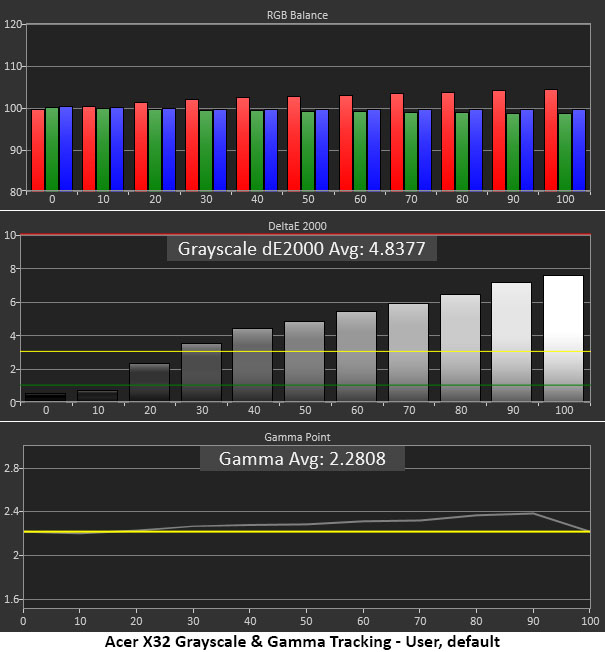
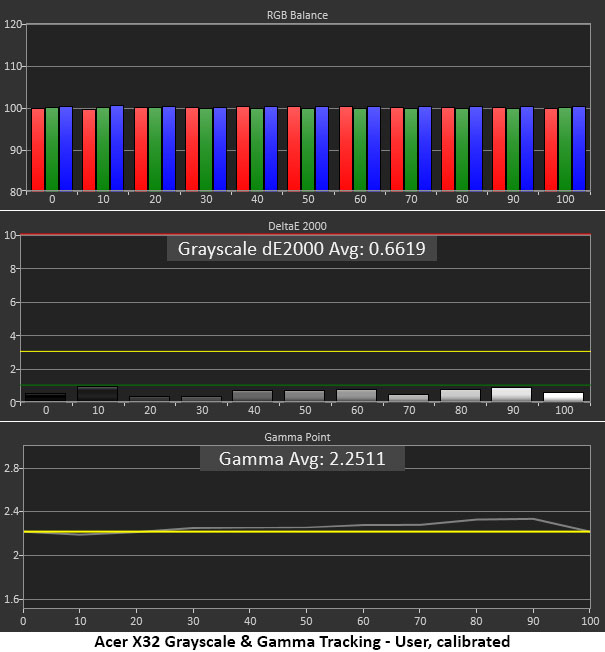
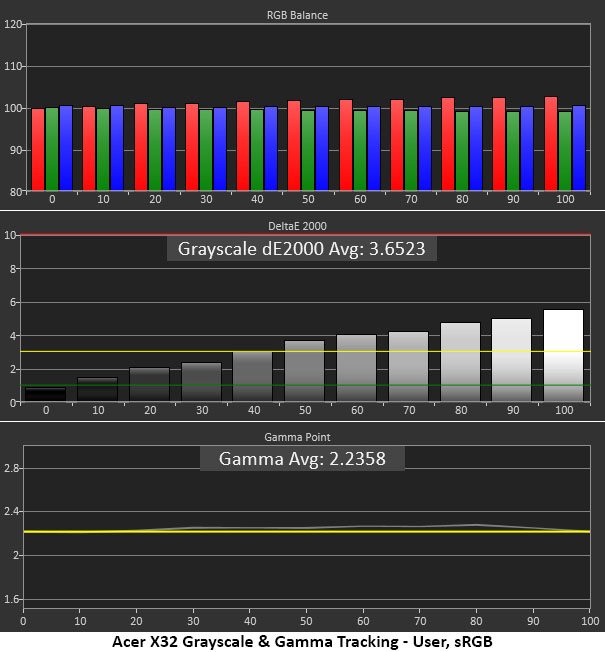
Since I had already adjusted the brightness slider, the X32 switched from its default Standard mode to User. The Normal color temp shows a bit of warmth in steps above 30% brightness. The error isn’t grievous and though the default dE value is 4.84, I was able to enjoy the image pre-calibration. It’s better to have too much red than too much green or blue. Gamma tracks reasonably well with a slight rise in the brighter steps (too dark).
Calibration tightens up grayscale tracking significantly and improves gamma too. It’s a win-win.
If you choose any of the other gamut options, color temp and gamma become fixed. In sRGB mode, grayscale tracking has a slight rise in red and gamma is picture perfect.
Comparisons
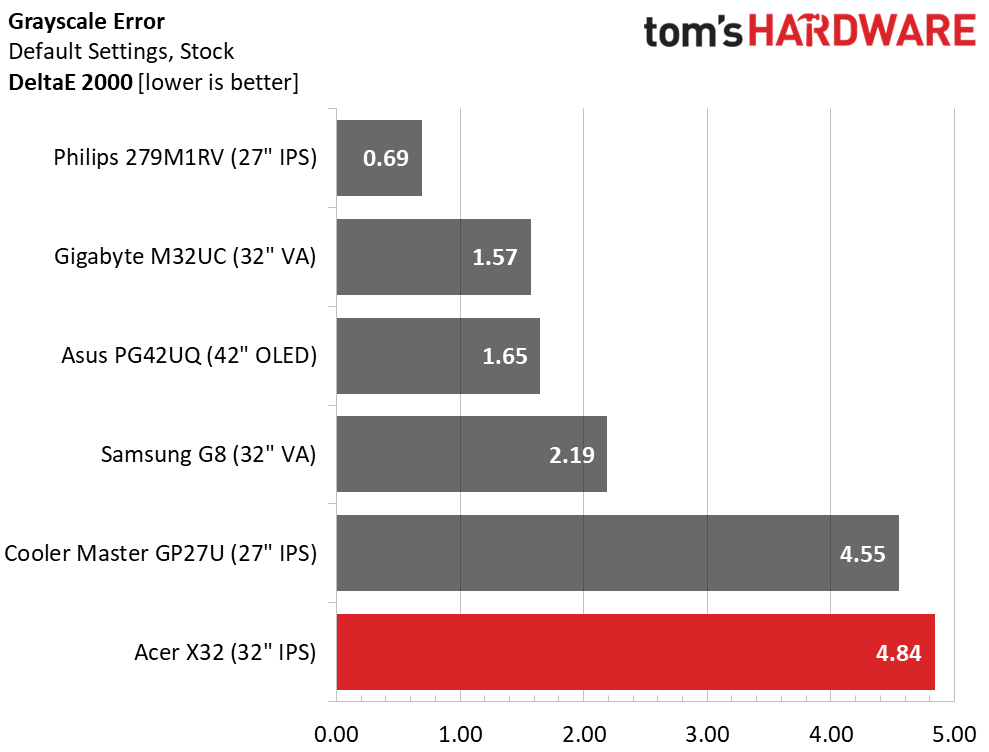
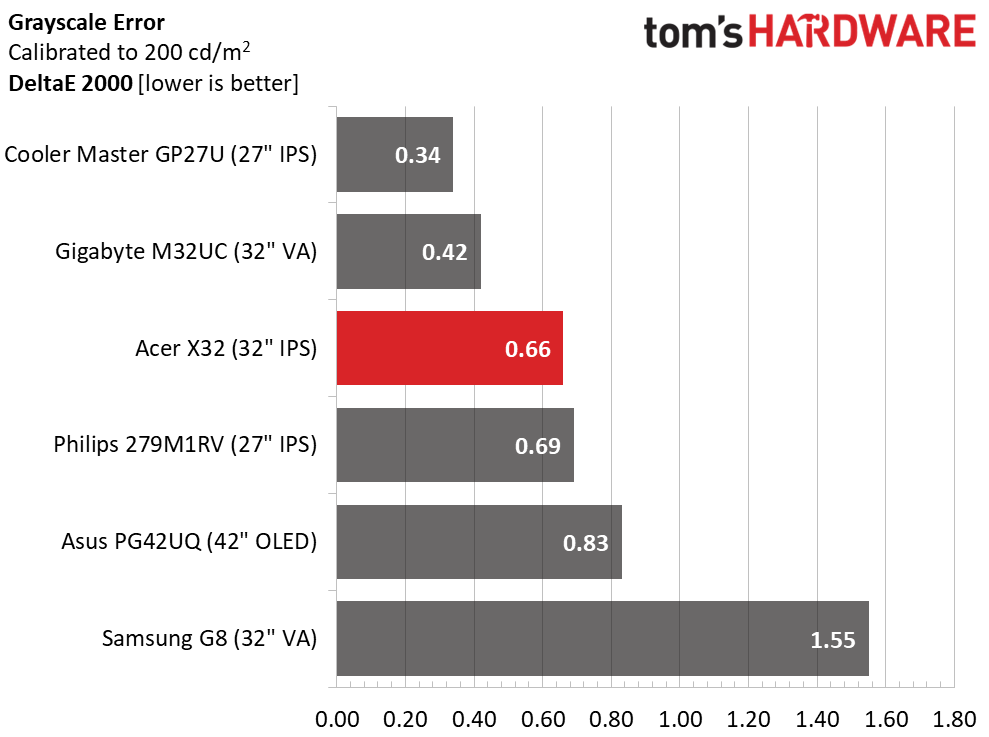
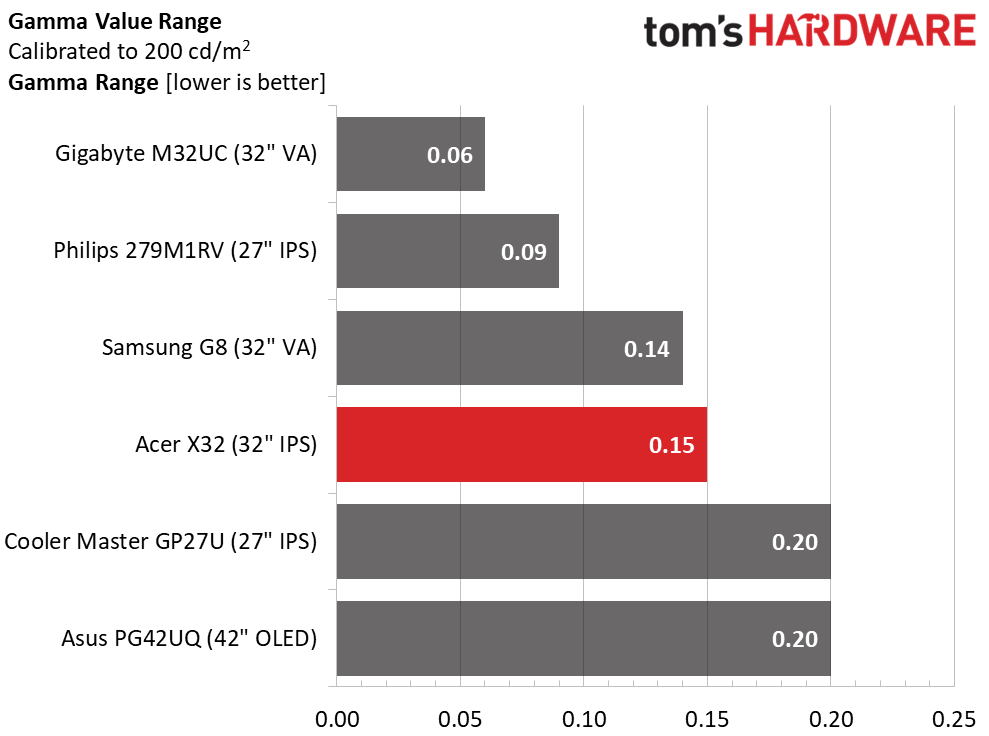
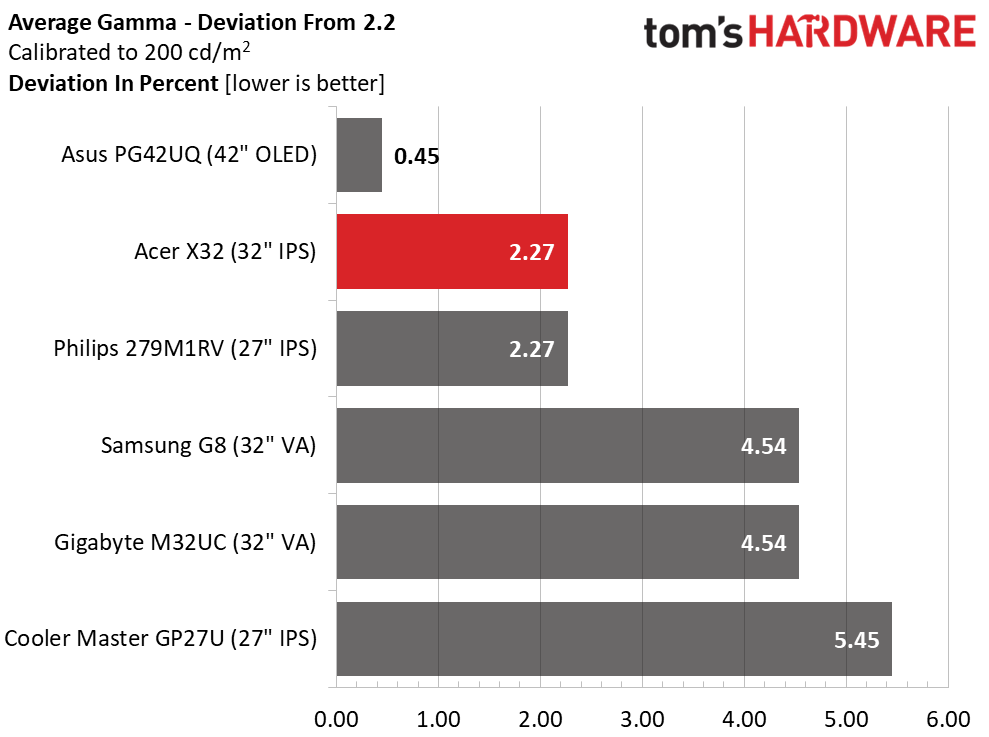
Given that the X32 comes out of the box with a 4.84dE grayscale error, I recommend calibration if you plan to stick with the Standard gamut mode that uses the full native color volume. But since the error is more warm than cool, it’s forgivable. Still, I believe the default grayscale tracking could be a little better given the state of the competition.
Once adjusted, the X32 has no visible grayscale issues and competes more favorably with the others.
Get Tom's Hardware's best news and in-depth reviews, straight to your inbox.
Gamma tracking is solid, with a tight 0.15 range of values and a 2.27% deviation from the 2.2 reference. The actual value is 2.25 and is mainly due to slightly dark highlights. This is something that will be hidden from view once the local dimming is turned on.
Color Gamut Accuracy
Our color gamut and volume testing use Portrait Displays’ Calman software. For details on our color gamut testing and volume calculations, click here.
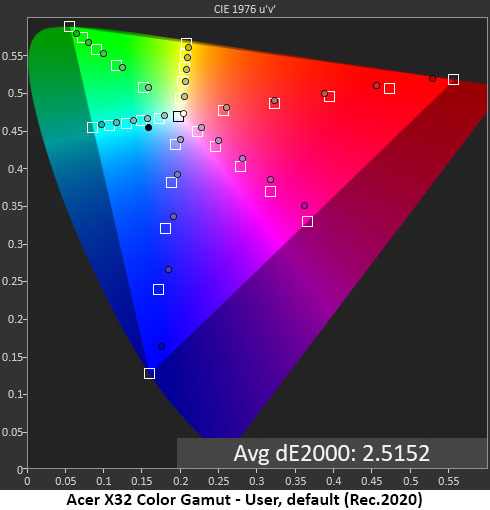
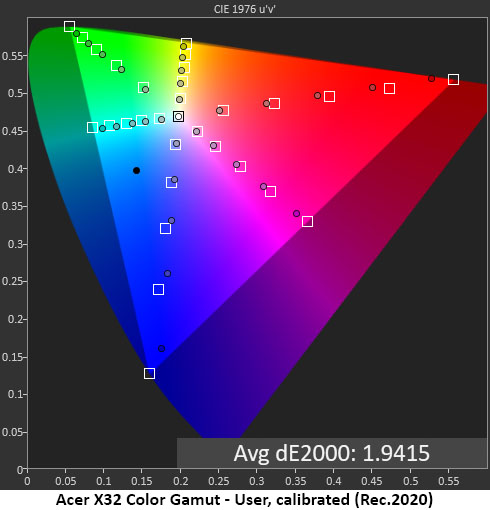
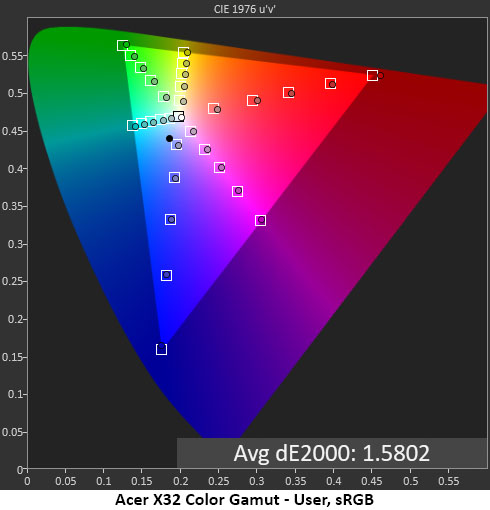
Once I had completed my initial run of color tests, it was clear that the X32 is a Rec.2020 monitor. It blows right past DCI-P3 and fills most of the 2020 spec with nearly perfect saturation and hue tracking. The reddish grayscale accounts for the magenta hue error but saturation-wise, every point is close to its target. I did all tests using the Rec.2020 reference.
After calibration, the average color error is reduced mainly due to the improvement in magenta hue. It doesn’t get better than this, at least not today. The X32 is supremely colorful and color accurate.
sRGB mode is spot-on as well and shows what you can expect from all the other gamut modes. You can’t calibrate them, but they are accurate enough to qualify for professional duty. This is excellent performance.
Comparisons
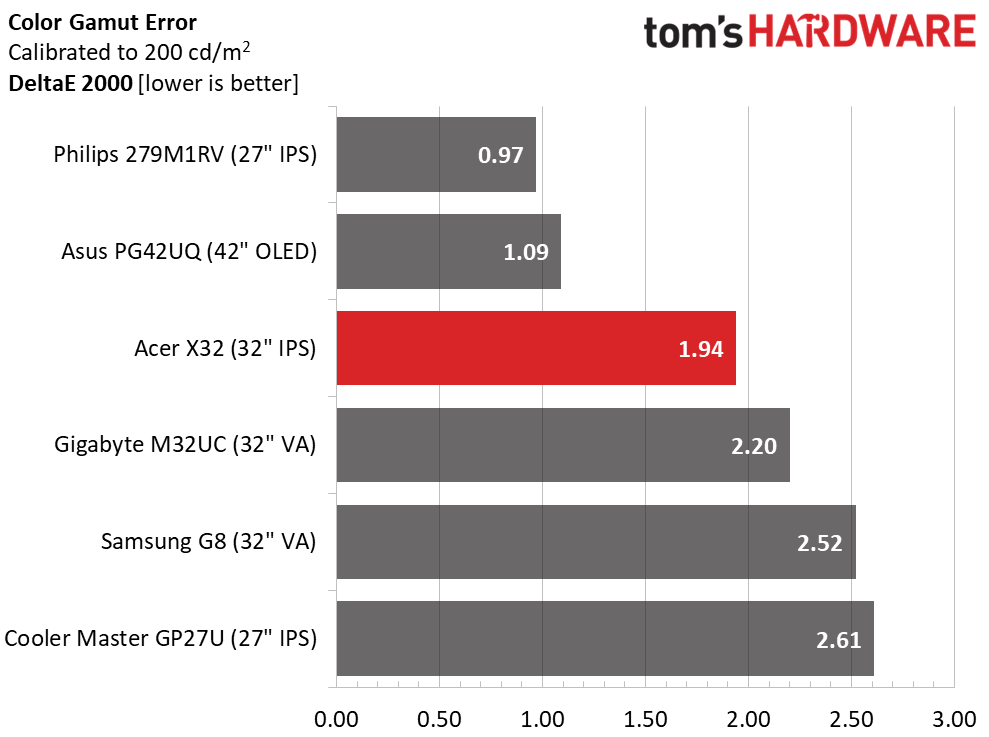
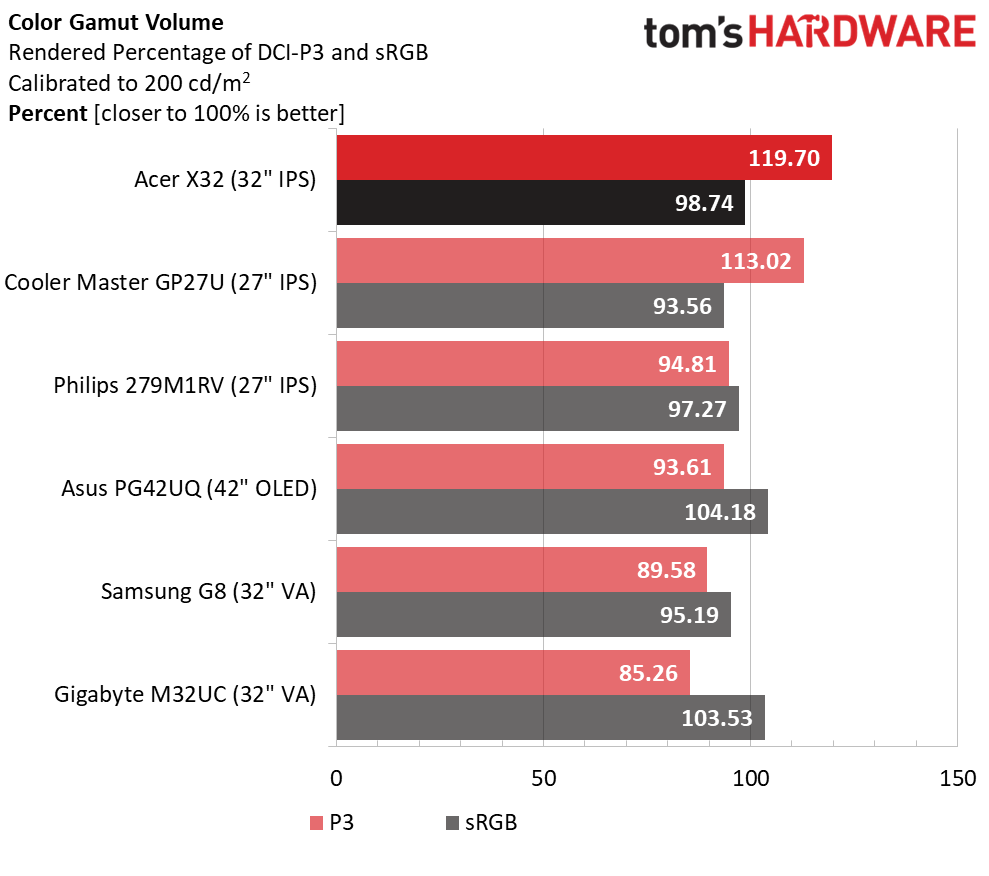
The X32 and the GP27U are both Rec.2020 monitors, so I calculated the color error based on that reference. The others are compared to DCI-P3. The differences in volume are plainly visible to the naked eye, so if you’re looking for maximum color, the Cooler Master and the Acer will provide the most, and accurately too. The X32 comes in at 1.94dE after calibration, which means it has no visible errors in the Rec.2020 realm. That’s quite an achievement for its $1,200 price.
You can see that also in the volume chart, where both screens are well ahead of the rest at over 100% coverage of DCI-P3. The X32 covers over 80% of Rec.2020. If you consider one of the other monitors, the Philips and the Asus are visibly more colorful than the Samsung or the Gigabyte.
MORE: Best Gaming Monitors
MORE: How We Test PC Monitors
MORE: How to Buy a PC Monitor
MORE: How to Choose the Best HDR Monitor
Current page: Grayscale, Gamma and Color
Prev Page Brightness and Contrast Next Page HDR Performance
Christian Eberle is a Contributing Editor for Tom's Hardware US. He's a veteran reviewer of A/V equipment, specializing in monitors. Christian began his obsession with tech when he built his first PC in 1991, a 286 running DOS 3.0 at a blazing 12MHz. In 2006, he undertook training from the Imaging Science Foundation in video calibration and testing and thus started a passion for precise imaging that persists to this day. He is also a professional musician with a degree from the New England Conservatory as a classical bassoonist which he used to good effect as a performer with the West Point Army Band from 1987 to 2013. He enjoys watching movies and listening to high-end audio in his custom-built home theater and can be seen riding trails near his home on a race-ready ICE VTX recumbent trike. Christian enjoys the endless summer in Florida where he lives with his wife and Chihuahua and plays with orchestras around the state.
-
Sluggotg Very nice! I wish they would make a 43" model. It is pricey but not insane. We are seeing significantly better monitors at decent prices. This is a luxury item, but really good gaming monitors are very reasonable now days.Reply -
Kridian Reply
Oh! It's INSANE alright! $1,274.03 is absurd.Sluggotg said:It is pricey but not insane. -
spoidz Do you have the exact Model number you reviewed? I am not finding the exact specs as listed on Amazon or even the Acer Site. They both do not list the native GSync in the specs:Reply
https://www.acer.com/us-en/predator/monitors/x32-fp - FP Model only
The Review Amazon link is also FP model -
Degrader The color settings are available in HDR mode with the latest firmware, v010. While the overall color accuracy is good in HDR there's a strange color temperature shift happening. This shift occurs when dark images are being displayed. Bright images do have temperature of around the 7000K on the unit I had, but the temperature increases significantly in dark content, up to 9000K, which makes it way too cool. Also the Adaptive Dimming setting "Fast" introduces heavy flickering in several content. These issues are not seen by the reviewer apparently.Reply -
sblantipodi Can we trust a review when the reviewer does not even know that X32 does not exist and that the monitor he reviewed does not have the GSYNC module even if he thinks so? :)Reply
In any case I have the X32FP (the one reviewed here) and I confirm that this monitor is a new reference in terms of speed and colour accuracy. HDR is amazing on it so I recommend it hands down. -
spoidz Replysblantipodi said:Can we trust a review when the reviewer does not even know that X32 does not exist and that the monitor he reviewed does not have the GSYNC module even if he thinks so? :)
In any case I have the X32FP (the one reviewed here) and I confirm that this monitor is a new reference in terms of speed and colour accuracy. HDR is amazing on it so I recommend it hands down.
Is it listed anywhere as at least G-Sync Compatible in your Monitor documents? I will likely upgrade to RTX4090 this year unless I can only get this level of monitor to run best with 7900XTX. -
sblantipodi Replyspoidz said:Is it listed anywhere as at least G-Sync Compatible in your Monitor documents? I will likely upgrade to RTX4090 this year unless I can only get this level of monitor to run best with 7900XTX.
No it's not written in the documentation because the documentation talks about Freesync Premium PRO.
I have a 4090 and GSYNC works like a charm -
Jake Hall Yeah, I'm really confused here. Not seeing a G-Sync model, only the Freesync FP model.Reply -
riddick51pb Replysblantipodi said:No it's not written in the documentation because the documentation talks about Freesync Premium PRO.
I have a 4090 and GSYNC works like a charm
@Jake Hall i'm going out on a limb here and stating that TH Member @sblantipodi found the Predator X32 FP "works like a charm" with the nvidia 4090. now, if someone tells me that i am in error, well that is entirely possible.Jake Hall said:Yeah, I'm really confused here. Not seeing a G-Sync model, only the Freesync FP model.